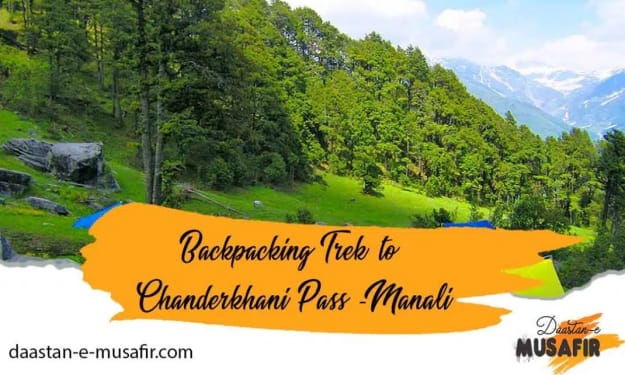Top 12 Things to Carry on Hiking or Trekking
Top 12 Things to Carry on Hiking or Trekking

Top 12 Things to Carry on Hiking or Trekking
When embarking on a hiking or trekking adventure, it's important to be prepared and carry the right gear to ensure your safety and comfort. Here are the top 12 things you should consider taking with you:
Backpack: A sturdy backpack with a comfortable fit is essential for carrying all your gear. Look for one with proper padding and multiple compartments for easy organization.
Navigation tools: Carry a map, compass, or GPS device to help you navigate your way through unfamiliar trails. Make sure you know how to use them effectively.
First aid kit: Accidents can happen, so always have a well-stocked first aid kit that includes essentials such as bandages, antiseptic wipes, painkillers, and any necessary personal medications.
Water and water purification: Stay hydrated by carrying an adequate amount of water. Depending on the length of your hike and availability of water sources, consider carrying a water purification method like a filter or water treatment tablets.
Snacks and high-energy food: Pack lightweight, high-energy snacks such as nuts, granola bars, and dried fruit to keep your energy levels up during the trek.
Extra clothing layers: Depending on the weather conditions, pack extra clothing layers including a waterproof jacket, hat, gloves, and extra socks. This will help you adapt to changing temperatures and stay comfortable.
Proper footwear: Invest in a good pair of hiking boots or trail shoes that provide ankle support and have a sturdy sole for better traction. Break them in before your hike to prevent blisters.
Headlamp/Flashlight: A reliable headlamp or flashlight is essential, especially if you're hiking in low-light conditions or planning to camp overnight.
Sun protection: Carry sunscreen, sunglasses, and a hat to protect yourself from the sun's harmful rays. Opt for sunscreen with a high SPF rating and consider a lip balm with SPF as well.
Multi-tool or knife: A multi-tool or pocket knife can come in handy for various tasks like cutting rope, opening cans, or repairing gear.
Whistle: Carry a whistle to attract attention in case of emergencies. Three short blasts is a universal distress signal.
Emergency shelter: Carry a lightweight emergency shelter such as a bivy sack or a space blanket that can provide protection in case of unexpected weather or if you need to spend a night outdoors.
Remember to customize your packing list based on the specific requirements of your hike or trek, considering factors like duration, terrain, climate, and personal needs.
What is the most essential need in hiking?
The most essential need in hiking is water. Staying hydrated is crucial for maintaining your overall health and well-being during a hike. Dehydration can lead to fatigue, dizziness, and even more severe medical conditions. It's important to drink water regularly, even if you don't feel thirsty, as thirst is not always an accurate indicator of hydration levels. Make sure to carry an adequate amount of water with you and plan your hike to include water sources along the way if possible. If water sources are limited, consider carrying a water filtration system or water treatment tablets to purify water from natural sources such as streams or lakes.
What not to pack for hiking?
When packing for a hiking trip, it's important to prioritize essential items and avoid carrying unnecessary or excessive weight. Here are a few things you should generally avoid packing for hiking:
Heavy or bulky items: Opt for lightweight and compact gear whenever possible to minimize the weight you have to carry. Avoid packing unnecessary items that may add bulk or weight to your backpack.
Non-essential electronics: While it's important to have navigation tools like a map, compass, or GPS device, try to limit the number of electronic gadgets you bring along. Unnecessary electronics like laptops, tablets, or excessive camera equipment can add weight and may not be suitable for outdoor conditions.
Excessive clothing: While it's important to have proper clothing layers for varying weather conditions, avoid overpacking clothes. Stick to essentials and choose lightweight, moisture-wicking, and quick-drying materials. Don't pack more than you need, as you can wash and reuse clothing during longer hikes.
Heavy toiletries: Minimize the weight of your toiletry bag by selecting travel-sized or sample-sized products. Avoid carrying large containers of shampoo, conditioner, or other bulky toiletries.
Multiple pairs of shoes: It's generally not necessary to pack multiple pairs of shoes for a hiking trip. Invest in a good pair of hiking boots or trail shoes that are comfortable and suitable for various terrains. One pair should suffice unless you have specific requirements.
Non-essential luxury items: While it's nice to have certain comforts, avoid packing luxury items that are unnecessary for your hike. Examples include excessive jewelry, heavy books, or bulky camping furniture.
Excessive food and cooking equipment: Plan your meals carefully and pack only the necessary amount of food and cooking equipment. Avoid carrying excessive amounts of food or bulky cooking gear that may not be essential for your trip.
Remember, the goal is to keep your backpack light and manageable so that you can enjoy your hike comfortably and safely. Tailor your packing list to the specific requirements of your hike and be mindful of unnecessary items that may add unnecessary weight.
What should I pack in my day pack?
When heading out for a day hike, you'll want to pack a day pack with essential items to ensure your comfort, safety, and preparedness. Here's a list of items you should consider packing in your day pack:
Water: Carry an adequate amount of water to stay hydrated throughout your hike. A reusable water bottle or hydration bladder is recommended.
Snacks: Pack lightweight, high-energy snacks such as trail mix, energy bars, or fresh fruit to keep your energy levels up.
Navigation tools: Carry a map, compass, or GPS device to help you stay on the right track. Familiarize yourself with the trail before setting out.
Sun protection: Pack sunscreen with a high SPF rating, sunglasses, and a hat to protect yourself from the sun's harmful rays.
Extra clothing layers: Depending on the weather conditions and terrain, pack an extra layer of clothing such as a lightweight jacket, rain shell, hat, or gloves.
First aid kit: Bring a compact first aid kit that includes essentials such as bandages, adhesive tape, antiseptic wipes, pain relievers, and any necessary personal medications.
Multi-tool or knife: Carry a small multi-tool or pocket knife that can assist with various tasks like cutting, repairing gear, or opening packages.
Headlamp or flashlight: Even for a day hike, it's wise to carry a small headlamp or flashlight in case of unexpected delays or if your hike continues into the evening.
Whistle: Carry a whistle to attract attention in case of emergencies. Three short blasts is a universal distress signal.
Personal identification and emergency contact information: Carry identification with you, such as a driver's license or ID card, and include emergency contact information in case of unforeseen circumstances.
Rain gear: Depending on the weather forecast, pack a lightweight rain jacket or poncho to stay dry in case of rain.
Personal essentials: Don't forget to pack items like a cell phone (fully charged), a small amount of cash, a pocket-sized notebook, and a pen.
Remember to adjust your packing list based on the specific requirements of your hike, the duration, the terrain, and the climate. Pack smart, stay prepared, and enjoy your day hike!
What food is best for hiking?
When it comes to food for hiking, it's important to choose options that are lightweight, portable, and provide sustained energy. Here are some examples of foods that are well-suited for hiking:
Trail mix: A mixture of nuts, dried fruits, and seeds provides a good balance of healthy fats, proteins, and carbohydrates. It's a great option for quick and easy snacking.
Energy bars: Look for bars that are high in carbohydrates and provide a good amount of protein and healthy fats. Choose bars that are not too high in sugar and are easily digestible.
Jerky: Beef, turkey, or other types of lean meat jerky are rich in protein and can be a satisfying and lightweight snack option. Look for low-sodium or natural varieties.
Fresh fruits: Choose fruits that are durable and less likely to bruise easily, such as apples, oranges, or grapes. They provide hydration and natural sugars for a quick energy boost.
Nut butter: Single-serve packets of nut butter, such as almond butter or peanut butter, are convenient and provide a good source of healthy fats and protein. You can spread it on crackers or eat it straight from the packet.
Crackers or rice cakes: These provide carbohydrates for quick energy and can be paired with nut butter, cheese, or other spreads for added flavor and nutrition.
Cheese: Hard cheeses like cheddar or Gouda can withstand the hiking conditions and provide a good source of protein and fats. They can be eaten on their own or paired with crackers.
Instant oatmeal or granola: These can be prepared easily with hot water or eaten as a snack without cooking. Look for options with whole grains, nuts, and dried fruits for added nutrients.
Dehydrated meals: Lightweight and easy to prepare, dehydrated meals are a popular choice for longer hikes or overnight trips. They offer a variety of options, including pasta, rice, and vegetable-based meals.
Electrolyte-replenishing drinks: Carry electrolyte powder or tablets to add to your water to help replenish salts lost through sweat. This can help prevent dehydration and maintain proper hydration levels.
Remember to consider your personal dietary preferences, any food allergies or intolerances, and the specific nutritional needs of your hike. Plan your meals and snacks accordingly, and ensure you have enough food to sustain your energy levels throughout the duration of your hike.
How do I pack for a 7 day trip?
Packing for a 7-day trip requires careful planning and consideration of the specific destination, weather conditions, and activities you'll be engaging in. Here's a general guideline to help you pack for a 7-day trip:
Make a packing list: Start by making a list of essential items you'll need for the trip. Categorize them into clothing, toiletries, electronics, documents, and other necessary items.
Check the weather forecast: Look up the weather forecast for your destination during the time you'll be there. This will help you determine the types of clothing you'll need to pack.
Choose versatile clothing: Opt for clothing pieces that can be mixed and matched and are suitable for various occasions. Pack enough undergarments and socks for the duration of the trip. Include items such as pants/shorts, t-shirts/tops, long-sleeved shirts, a lightweight jacket or sweater, and appropriate footwear.
Consider the activities: If you have specific activities planned, pack the appropriate gear. For example, if you'll be swimming, include swimwear and a towel. If you'll be hiking, pack appropriate footwear, a backpack, and other hiking essentials.
Pack toiletries: Pack travel-sized toiletries to save space. Include items such as toothbrush, toothpaste, shampoo, conditioner, soap, and any necessary personal care items. Don't forget sunscreen and insect repellent.
Organize electronics: If you're bringing electronics, pack them safely in a padded case or bag. Include essentials like your phone, charger, camera, and any other devices you may need. Consider a portable charger for your electronic devices.
Don't forget travel documents: Carry your identification, passport (if required), travel insurance information, tickets, and any other necessary travel documents in a secure and easily accessible place.
Consider laundry options: If you'll have access to laundry facilities during your trip, pack fewer clothes and plan to do laundry. If not, pack enough clothes to last the entire duration.
Pack travel essentials: Include a small first aid kit, a reusable water bottle, a travel pillow, earplugs, and a sleep mask for added comfort during your journey.
Leave room for souvenirs: If you anticipate buying souvenirs or shopping during your trip, leave some space in your luggage to accommodate them.
Remember to pack efficiently by rolling or folding clothes to save space, and utilize packing cubes or compression bags to maximize the available space in your suitcase or backpack. It's also a good idea to weigh your luggage before leaving to ensure you comply with any weight restrictions imposed by your mode of transportation.
Adjust this packing list based on your personal needs, the specific nature of your trip, and any additional items that may be required.
What colors to avoid when hiking?
When it comes to choosing the colors of your hiking clothing, it's generally recommended to avoid bright and vibrant colors that may attract unwanted attention from wildlife, particularly in areas where encounters with animals like bears or other potentially dangerous animals are a concern. Here are a few color considerations to keep in mind:
Bright and neon colors: Colors like neon yellow, orange, or pink may resemble the shades of some flowers or berries that animals are attracted to. These colors may inadvertently draw attention to yourself, potentially increasing the risk of encounters with wildlife.
Solid white: While white may seem like a neutral color, it can stand out against natural backgrounds, making you more visible to animals. It's best to avoid wearing all-white clothing when hiking.
Instead, consider opting for colors that blend well with the natural surroundings and don't stand out excessively:
Earth tones: Colors like brown, tan, olive green, or khaki tend to blend in better with natural environments and are less likely to attract attention.
Neutral colors: Gray, beige, and muted shades of blue or green are good choices as they are less likely to make you stand out in the wilderness.
Camouflage patterns: If you're in an area where hunting is allowed or if you want to be extra cautious, you might consider wearing clothing with camouflage patterns that help you blend into your surroundings.
Remember, while color choice is a consideration, it's also important to prioritize other safety measures, such as making noise, carrying bear spray if needed, and being aware of your surroundings, to reduce the risk of wildlife encounters during your hike.
Can you wear normal clothes to hike?
While it's possible to wear normal clothes for hiking, it's generally recommended to wear clothing specifically designed for outdoor activities. Here are a few reasons why specialized hiking clothing is beneficial:
Comfort: Hiking-specific clothing is designed to provide comfort and functionality during outdoor activities. Fabrics are often moisture-wicking, breathable, and quick-drying, helping to keep you comfortable and dry as you exert yourself on the trail.
Performance: Hiking clothing is designed with features such as reinforced seams, stretchable materials, and articulated designs to enhance mobility and durability. This can be especially important when navigating challenging terrains.
Protection: Hiking clothing is often designed to provide protection from the elements. You can find clothing with UPF (ultraviolet protection factor) ratings to shield your skin from harmful sun rays, as well as moisture-resistant or waterproof materials to keep you dry in wet conditions.
Layering: Hiking clothing is designed with layering in mind, allowing you to easily add or remove layers based on changing weather conditions. This adaptability helps regulate body temperature and keeps you comfortable throughout your hike.
Safety: Some hiking clothing may include safety features such as reflective elements for visibility in low-light conditions or in case of emergencies.
That being said, if you're going on a short and easy hike in favorable weather conditions, you can wear comfortable, moisture-wicking athletic clothing or outdoor gear that you already have. It's important to consider the terrain, weather, and duration of your hike when choosing your clothing to ensure you are adequately prepared and comfortable.
How do I protect my skin when hiking?
Protecting your skin while hiking is important to prevent sunburn, minimize the risk of skin damage, and maintain overall skin health. Here are some tips to protect your skin during a hike:
Apply sunscreen: Use a broad-spectrum sunscreen with a high SPF (at least SPF 30) on all exposed areas of your skin. Apply it generously and reapply every two hours or more frequently if you're sweating heavily or in water. Don't forget to cover areas like your face, neck, ears, hands, and feet.
Wear protective clothing: Choose lightweight, loose-fitting clothing that covers your skin as much as possible. Opt for long-sleeved shirts, pants, and a wide-brimmed hat to shield your face, neck, and ears from the sun. Look for clothing with a high UPF (ultraviolet protection factor) rating for added sun protection.
Seek shade: Take breaks in shaded areas whenever possible, especially during the peak hours of intense sunlight (usually between 10 a.m. and 4 p.m.). Plan your hike to include shaded sections or carry a lightweight tarp or umbrella for temporary shade if necessary.
Wear sunglasses: Protect your eyes from harmful UV rays by wearing sunglasses with 100% UV protection. Look for sunglasses with wraparound or large lenses for maximum coverage.
Lip balm with SPF: Use a lip balm that contains SPF to protect your lips from sunburn and chapping.
Stay hydrated: Proper hydration helps maintain the health and elasticity of your skin. Drink plenty of water before, during, and after your hike to keep your skin hydrated.
Consider bug repellent: Depending on the location and time of year, insect bites can be a concern while hiking. Use a bug repellent to protect your skin from insect bites and potential diseases they may carry. Choose one that is safe for your skin and follow the instructions for application.
Take care of your skin after the hike: After your hike, cleanse your skin gently with a mild cleanser and moisturize to replenish lost moisture. If you have any cuts, scrapes, or blisters, clean them properly and apply appropriate first aid treatment to prevent infection.
Remember, skin protection is not only important during sunny days but also on overcast or cloudy days when UV rays can still penetrate through the clouds. Taking these precautions will help keep your skin safe and healthy while enjoying your hiking adventures.
About the Creator
daastanemusafir
https://daastan-e-musafir.com/






Comments
There are no comments for this story
Be the first to respond and start the conversation.